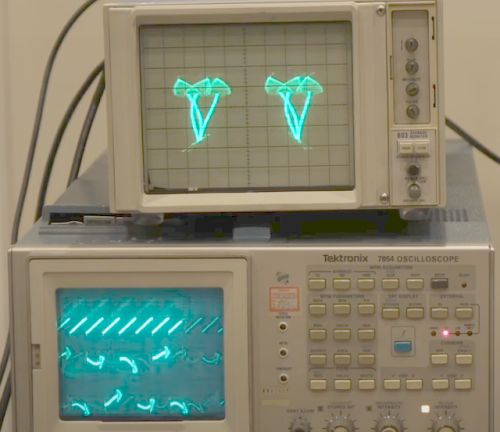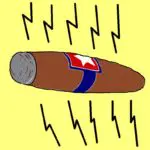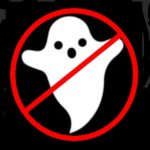
If you take an ordinary sound file and feed it to both channels of an oscilloscope operating in X-Y mode, you’ll get an image on the scope looking a lot like a pulsating straight line at some angle to the horizontal. But the situation changes if you use a stereo signal with the left channel used for horizontal deflection and the right channel used for vertical deflection. Then put a sine wave into the horizontal deflection channel and a cosine wave of the same frequency into the vertical deflection channel. The result is a display of a circle–just as you were taught in high school trigonometry.
Of course, the resultant image is known as a Lissajous pattern. Normally, engineers setup Lissajous patterns to get information about the relationship between the two signals driving the X and Y axes. The metrics typically of interest in a Lissajous pattern include frequency, ratio, relative amplitude and phase shift.
But in recent years, Lissajous patterns have become a source of entertainment on destinations such as YouTube thanks to a subculture of technologists interested in generating geometric figures on scope displays in the X-Y mode. There is even a reddit channel devoted to oscilloscope music. One energetic enthusiast has even created scenes from the Quake video game that display on a scope.

The usual approach for these projects is to use signals in the audio range. So scope viewers both see geometric shapes and get serenaded by a lot of odd-sounding electronic-style “music.” To see how geometric shapes might arise, consider the previous example of the circle. The size and shape of the circle can be adjusted by boosting or softening the volume of the two channels. Adding a sawtooth wave to the right channel makes the circle turn into a spiral. The display can be turned into the shape of a mushroom by multiplying the left channel with a sine wave of the same frequency as the sawtooth while only using the last quarter of the sine wave. The mushroom can be made to move by adding to the left channel another sawtooth multiplied by a cosine of a slightly different frequency. The number of mushrooms displayed can be increased by dividing the frequency of the cosine by two or three. More mushrooms can be made to appear by randomly adding square waves.

OsciStudio as well lets the user rotate or otherwise change the imported geometry to see how, for example, changing the viewpoint changes the sound needed to generate the image. Figures of animals imported into OsciStudio can be animated to see how the act of walking affects the necessary sound. OsciStudio can accept files from basically any 3D image editing programs that generate OBJ-type files. OsciStudio users can modify sounds through a small plugin system and animate parameters through timelines.
But it’s also possible to generate audio files for creating audio for Lissajous patterns without buying any software or even without having access to a real oscilloscope. Free audio editing software called Audacity can generate tones on two channels that can be used to create simple geometric shapes on free software from Raber that simulates an oscilloscope operating in X-Y mode on a PC. Raber’s scope simlulator program runs on Windows and Mas OS X machines and delivers an aesthetic close to what you’d see on an analog scope. It also lets the user manipulate the audio by speeding it up or slowing it down. It will accept Wav,Flac,Mp3 and a few other audio file formats. And it provides a way to export the image sequences the audio file generates.






Leave a Reply
You must be logged in to post a comment.